
Although Japanese woodblock printmaking is a tradition that goes back several centuries, it's an aesthetic that tends to look timeless - particularly the Shin Hanga prints of the early 20th century. The tightly rendered line work has so much in common with contemporary western artists like Frank Quitely and Chris Burnham, that it's easy to imagine it appearing in the pages of a modern comic book. But there are a few tell-tale signs that betray the age of the originals and it's these I'll be focusing on here, in order to mimic the style.
On its own, trying to create an authentic-looking period piece might be an interesting technical exercise, but it may not be all that interesting to anyone other than a specialist, so I've opted to add some futuristic touches to the subject matter. I think these bits of futurism with the traditional-looking style make for a nice contrast.
Traditionally, the artwork for a print like this would be painstakingly carved out of wooden blocks. Since I have absolutely no experience in the field of engraving (and none of the appropriate tools), I'll instead be doing the line work with pens and brushes, then using Photoshop for the colouring. I'll only be using a small Wacom One graphics tablet and the default Photoshop Pencil tool for the digital work - no custom brushes. Right, let's get to it!
1 Concept sketch
I start out with a rough concept sketch, just to establish the main elements of the image. In my comics work, this would normally just be a pencil sketch, but since colour is going to be so important to the mood of the picture, I add a quick dash of colour in Photoshop.
2 Source reference
Bu hikaye ImagineFX dergisinin June 2022 sayısından alınmıştır.
Start your 7-day Magzter GOLD free trial to access thousands of curated premium stories, and 9,000+ magazines and newspapers.
Already a subscriber ? Giriş Yap
Bu hikaye ImagineFX dergisinin June 2022 sayısından alınmıştır.
Start your 7-day Magzter GOLD free trial to access thousands of curated premium stories, and 9,000+ magazines and newspapers.
Already a subscriber? Giriş Yap
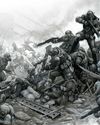
PAINT EPIC BATTLES IN TRADITIONAL INK
Warhammer illustrator THOMAS ELLIOTT shows you how to create an epic science fiction fight scene with this step-by-step guide
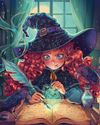
CONJURE MAGIC ILLUSTRATIONS
Daria Anako demonstrates her process for creating a whimsical piece of art with some spellbinding touches
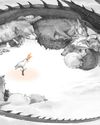
First Impressions
We discover the early influences that inspired the artist
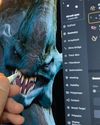
ZBrush for iPad
GAME CHANGER The desktop version of popular 3D sculpting software ZBrush has been redesigned for iPad - and it's brilliant
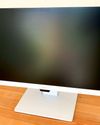
BenQ GW2786TC
GET AN EYEFUL Don't scrimp out on your health with a monitor that's kind on the eyes and good for creative tasks
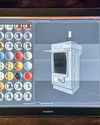
Huion Kamvas Pro 19
TABLET WARS An attractive pen display does an excellent job of balancing price and performance as it sets out to challenge its rivals in the mobile marketplace
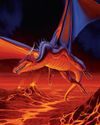
DRAGON OFORCEC
Legendary D&D artist Larry Elmore explains the keys to crafting timeless fantasy art.
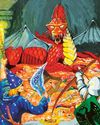
DUNGEON MASTERS
ImagineFX marks the milestone 50th anniversary of the launch of Dungeons & Dragons with a look at its rich tradition of illustration
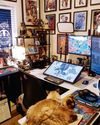
Erik Ly
Gamer's haven Why the artist enjoys a maximalist aesthetic more than the minimalist approach.
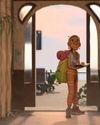
2D meets 3D: How the workflows are merging
Interdimensional As VFX and animation evolve and tools become more accessible, Tanya Combrinck asks whether the separation between the mediums is reducing